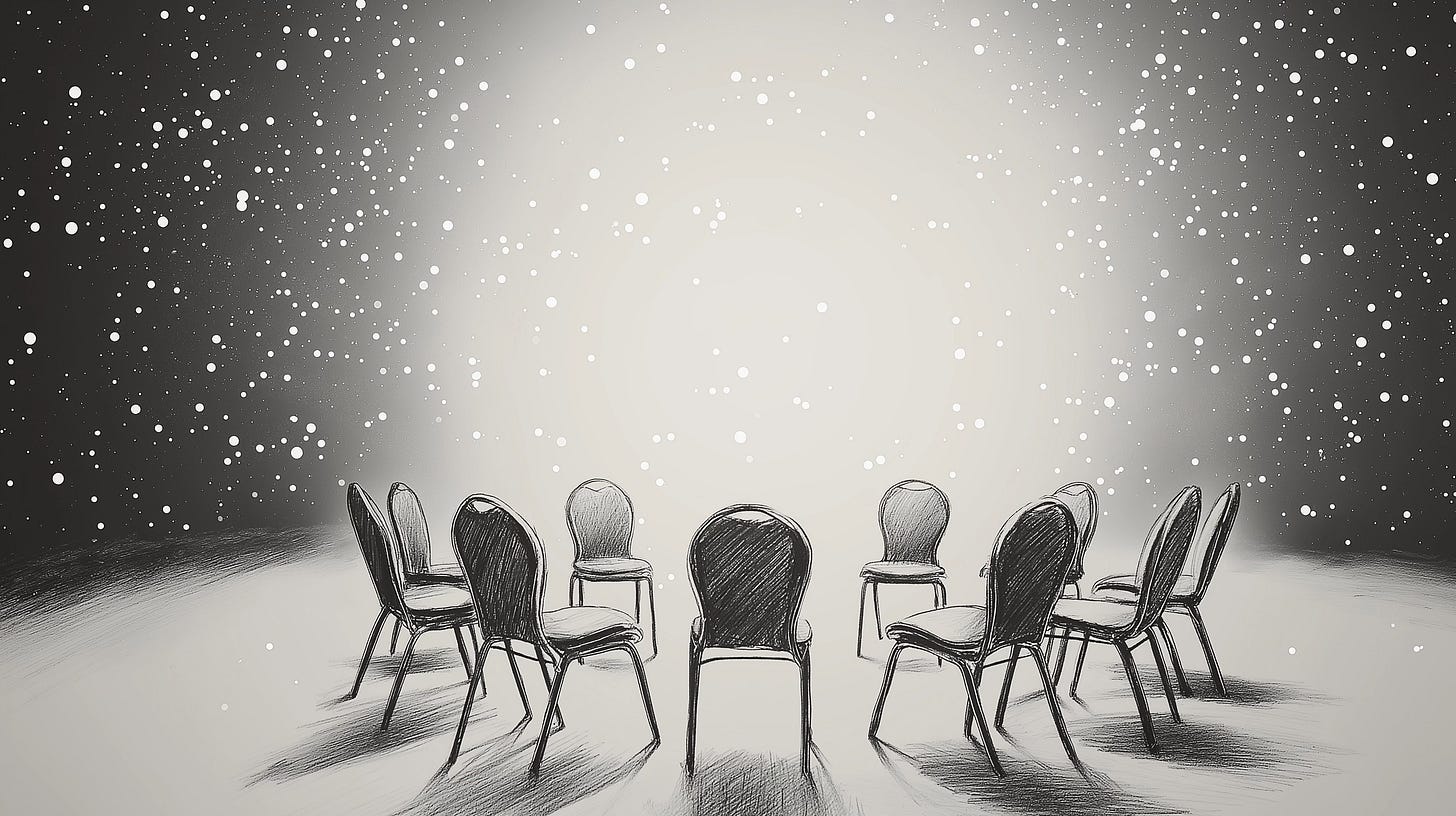Low-5 Transforms Group Therapy – A 6-Hour Psycholytic Journey
In a single-day workshop, facilitators used Low-5 to guide participants through therapy, using intention-setting, incremental dosing, and group processing to foster a safe, connected space.
Lower the Dose, Increase The Presence
In a quiet room, six people sit in a circle. Each holds a vape pen containing 5% Low‑5 (low-dose 5-MeO-DMT). The medicine’s effect rises and falls within minutes, but what unfolds between those present lasts far longer.
The short duration of Low-5 lets facilitators Erin and Jay run a dynamic, multi-staged psycholytic protocol in a single six-hour session. Drawing from clinical, somatic and relational traditions, their model blends low‑dose psychedelic work with facilitated group inquiry and the structured intimacy of dyads. The result? A shared experience where low doses lead to profound realizations.
Psycholytic therapy is therapy supported by low-to-moderate psychedelic doses that allow the client to remain alert and communicative easily.
Like many practitioners, Erin’s first 5‑MeO‑DMT encounter was a high‑dose that left him awed but wary. “After that, I didn’t touch it for three years,” he recalls. Jay’s high-dose experience was positive and led him to the Bridging Heaven retreat, where he keyed into the power of lower-dose 5-MeO-DMT. This informed his transpersonal‑counselling degree at Naropa University, where he asked: What if, in addition to its high-dose benefits, much lower doses of 5-MeO-DMT could serve as a gentle prompt for presence?
Building a Model—Organically
The protocol emerged inside Erin and Jay’s monthly practitioner‑supervision circle. One month, they invited the group to try the Low‑5 work they had been offering one‑to‑one. Six people passed the pens. Some felt it immediately, others did not, but everyone felt the potential.
Over eight months, the format stabilized, and the facilitators clarified three founding intentions:
Community first – cultivate a consistent, caring circle.
Therapeutic depth – focus on psycholytic, clinically informed work.
Relational transparency – facilitators share their own check‑ins to model humanity and vulnerability.
Anatomy of a Group
Each Low‑5 group is a six‑hour journey held roughly once a month with six to ten participants and two facilitators. All participants undergo a comprehensive screening process to confirm their medical and psychological suitability for the monthly sessions. Everyone has a personal pen loaded with a five‑per‑cent 5-MeO-DMT solution.
Opening Circle – Agreements on safety, consent and confidentiality. Check‑ins capture what each person brings into the space.
Community Inquiry – A prompt is offered (e.g., “Where do you find home within yourself, and where do you disconnect?” or “What’s your relationship with pride and shame?”). Participants take a three-second draw of the medicine, ride the wave of experience, reflect silently, then share. The cycle repeats for three rounds, each building on the last, guided by the energy of the group.
Dyad Work – Participants pair up. One holds presence while the other works with the pen, informed by The StepWise Protocol, stepping up their dose only if desired. Erin and Jay circulate, offering somatic cues or therapeutic interventions. After thirty minutes, they switch roles.
Integration – Throughout, the group gathers in small check-ins between dyad rounds, enjoys snacks, and supports reintegration. Finally, everyone returns for a closing circle. Because the medicine has largely cleared, verbal sharing, humour and gentle movement allow the integration process to begin immediately, with many finding the support they need within the session themselves.
The Gift of the Group Field
For Erin and Jay, there is magic in the group. Repeated rounds of group shares create a field of permission where expression feels safer each time. One evening, a reserved participant was quietly struggling; Erin gently led them to the centre, others gathered, tears flowed, and the whole room felt the release.
This field of permission gives people space to both experience and express. The field has wisdom. That’s the core healing here. Many are afraid to express themselves. But they’re learning to do so in this container, and it’s beautiful to witness. – Erin
The Role of Presence
One of the most surprising findings for participants was that holding presence for another person can be profoundly healing, even without the medicine.
Erin shares a story about a longtime client who had never been on the giving end of support. “He was a businessman, not a practitioner. But when he held space for someone going through a hard time, you could see his heart open. That was his healing.”
Participants are also taught to resist the urge to “fix” others. “When someone cries, people want to soothe or problem-solve,” says Jay. “But we model how to simply be with them.”
The goal is not to solve a problem but to stay present with whatever arises. A participant might notice a tight chest, a childhood memory or outright resistance. They are invited to name it, not analyze or change it, bringing raw data into the relational field.
"Low‑5 helps by softening perceptual filters,” says Jay. “There’s enough shift to reveal patterns and sensations, not so much that the thread of inquiry is lost.”
A Model in Motion
Still early in its evolution, this protocol hints at what community‑based psycholytic therapy can offer: everyone, both giver and receiver; integration in real time; a short‑acting molecule catalyzing long‑term change.
As Jay puts it, “It’s been a joy to watch this evolve—and to see a real, healing community form around it.”




